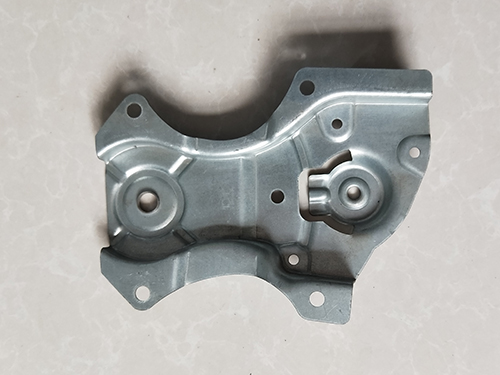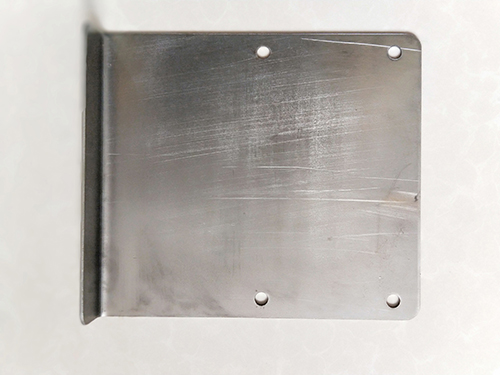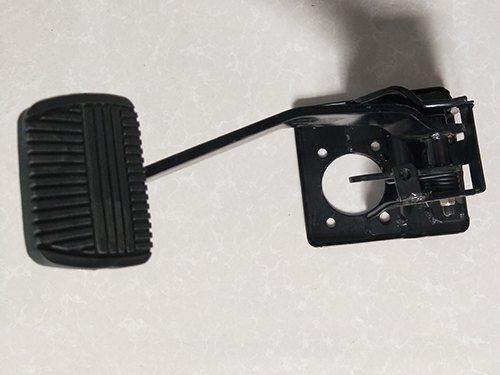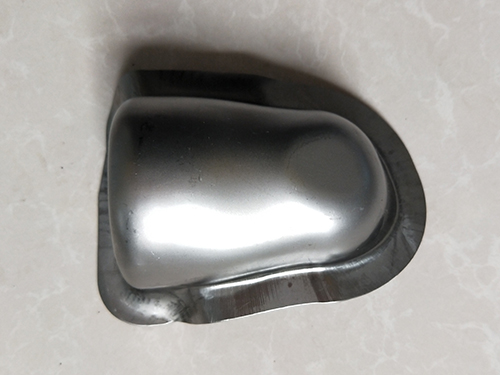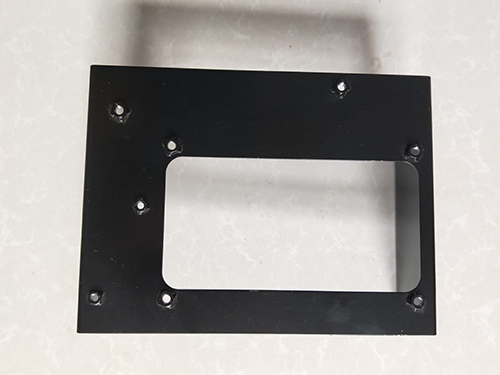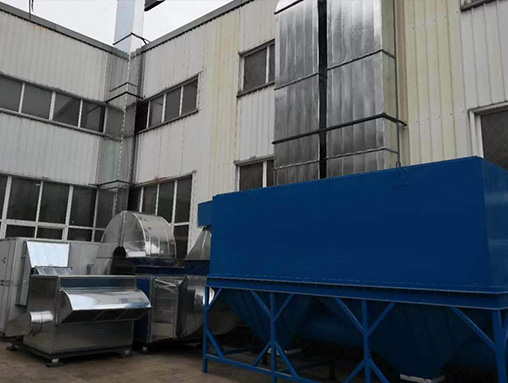Heat treatment process and fault diagnosis analysis of metal stamping parts
There are generally several methods to improve the accuracy of stamping molds, including:
1. Improve the design of stamping molds
Whether the design of stamping dies is reasonable is the basis for improving the degree of stamping dies. Therefore, measures should be taken to address adverse conditions during product forming when designing stamping dies, in order to improve the quality of the stamping die. For example, the lifespan of small hole stamping dies is often reflected in the convex die used for punching small holes. For this type of stamping die, the length of the small convex die should be shortened as much as possible during design to increase strength. At the same time, a guide sleeve should be used to strengthen the small convex die for protection.
2. Correct selection of stamping die materials
Different stamping die materials have different strengths, toughness, and properties. Using materials under certain conditions can increase the degree several times. Therefore, in order to improve the degree of stamping molds, it is necessary to choose good materials.
3. Reasonably carry out forging and heat treatment of stamping die parts
One of the main ways to improve the accuracy of stamping dies is to require reasonable forging and heat treatment for materials of the same material but different properties while selecting stamping die materials. For example, during quenching, if overheating occurs during heating, not only will the workpiece become too brittle, but it is also prone to deformation and cracking during cooling, resulting in a decrease in hardness. Therefore, when manufacturing stamping molds, it is important to have a reasonable understanding of the heat treatment process.
4. Reasonably arrange the manufacturing process and processing accuracy of stamping molds
The machining accuracy of stamping molds has a significant impact on the degree of stamping molds. Due to uneven assembly clearance in the punching die, the concave die is often bitten under shear force, which affects the service life of the punching die. Meanwhile, if the surface smoothness of the stamping die is too low, it will also reduce the degree of the stamping die.
Therefore, during processing, sufficient attention should be paid to the size of the hole spacing, the perpendicularity of the convex mold to the fixed plate support surface during assembly, the uniformity of the spacing between the stamping dies, and the guiding accuracy level of the guide sleeve and guide column. The higher the manufacturing and assembly accuracy and the higher the surface roughness level of the working part, the higher the degree of the stamping die.
5. Choosing the right press machine
In order to improve the accuracy of the stamping die, a press with high precision and rigidity should be selected, and its stamping tonnage should be greater than 30% of the stamping force. Normally, using a servo punch can increase the lifespan of the mold by several times to tens of times or more.
6. Reasonable use and maintenance of stamping molds
In order to improve the accuracy of stamping molds, operators should use and maintain stamping molds reasonably, and regularly repair stamping molds to prevent them from working with problems.
Common faults, diagnosis and analysis
1. Poor pneumatic braking fault
(1) Phenomenon: The fault phenomenon of poor pneumatic braking is similar to that of poor hydraulic braking.
(2) Reason:
① Air compressor malfunction: belt broken or slipping, severe wear on piston and cylinder, loose closure of unloading valve, ineffective adjustment of air pressure regulating valve.
② The valve on the air storage cylinder failed, resulting in low air pressure.
③ Brake valve malfunction: The intake and exhaust valves are not tightly closed, the diaphragm is broken, the sealing ring of the piston is poorly sealed, and the exhaust clearance is too large.
④ The quick release valve diaphragm has ruptured.
⑤ The brake chamber diaphragm has ruptured.
⑥ The wheel brake has malfunctioned, which can be divided into the following situations: the gap between the brake drum and the brake shoe is too large or the contact is too small; the brake shoe pads are stained with oil or water; The rivets on the brake shoes are loose; The brake drum is out of roundness or worn with grooves; The support pins of the camshaft and brake shoes are rusted, worn, or loose; Improper adjustment of the adjustment lever on the adjustment arm; The brake pipeline is leaking air.
2. Failure of pneumatic brake
(1) Phenomenon: The fault phenomenon of pneumatic brake failure is similar to that of hydraulic brake failure.
(2) Reason:
① The exhaust pipe has no air or insufficient inflation. These types of faults include the following five situations: the air compressor drive belt is broken or slipping; The gas supply pipeline between the air compressor and the exhaust drum is damaged or blocked, or the pipeline joint is loose or leaking severely; Unloading valve stuck; The trailer brake release switch is not turned off or not tightly closed; The exhaust pipe is broken, and all functional valves of the exhaust pipe are malfunctioning or leaking.
② Brake valve malfunction. This type of malfunction can be divided into the following three situations: the intake valve of the brake valve is stuck or not tightly closed, causing the intake valve to not open, and compressed air is discharged from the exhaust port; The brake pedal transmission mechanism is broken; The brake pipeline is broken. Loose joints or blocked pipes.
③ Brake chamber malfunction. Mainly including: brake chamber diaphragm rupture, shell damage, loose joint surface or being stuck in the shell hole and unable to move due to pushing; Improper adjustment of the arm resulted in a small stroke of the brake chamber push rod.
④ Wheel brake failure. The reasons for such malfunctions are as follows: the brake camshaft is stuck with the bracket bushing, causing the camshaft to not rotate or the angle to be too small; Excessive clearance between brake shoe friction pads and brake drums after wear and tear; Large area detachment or severe erosion of brake shoe friction pads; The brake drum is cracked and broken.
3. Pneumatic brake deviation fault
(1) Phenomenon: The phenomenon of pneumatic brake deviation fault is similar to that of hydraulic brake deviation fault.
(2) Reason:
① Wheel brake failure. The reasons for the malfunction in this area can be divided into the following categories: significant differences in the angle of the brake actuation camshafts of each wheel, inconsistent fit and wear between the brake actuation camshafts and the bracket, or inflexible rotation of a certain brake actuation camshaft; The brake clearance of each wheel brake, the quality of the brake shoe friction plate, and the contact and fit between the brake shoe friction plate and the brake drum are significantly different; The technical indicators such as diameter, roundness, and cylindricity of each wheel brake drum, as well as the working surface condition of each brake drum, vary greatly; The elastic force of the shoe return spring of the wheel brake is too different, or the fit and wear degree of each brake shoe shaft and bushing are inconsistent.
② Brake chamber malfunction. The brake chamber intake pipe of a certain wheel brake is flattened, corroded, or blocked, or the intake hose is aged and swollen, and the intake pipe joint is loose or leaking air; Loose connecting bolts of a brake chamber housing caused air leakage. Or the diaphragm of the brake chamber may age or break; The braking clearance of each wheel brake is inconsistent, or there is a jamming phenomenon in the push rod of a certain brake chamber.
③ Other malfunctions. There are several other common causes of malfunctions, including: uneven load in the eyes of the vehicle, causing the body to tilt; Inconsistent tire pressure on the left and right sides of the vehicle; The specifications of the left and right tires of the vehicle are inconsistent, and the degree of wear on the tread patterns of each tire varies greatly; The elasticity of the suspension springs on both sides of the vehicle is inconsistent; Frame deformation and axle displacement; Inaccurate front wheel alignment or loose steering system; The adhesion coefficients on both sides of the road surface differ greatly, causing the road surface to tilt towards one side, resulting in the tilting of the vehicle body.
4. Pneumatic brake drag fault
(1) Phenomenon: When the brake pedal is lifted, the brake valve exhausts slowly or not, and the brake cannot be released, resulting in difficulties in starting and weak driving of the vehicle, which is a common phenomenon of air brake disengagement.
(2) Reason:
① Brake valve malfunction: The exhaust clearance of the brake valve is too small; The rubber of the brake valve exhaust valve seat is swollen, blocking the exhaust port; The exhaust valve guide seat is corroded and stuck.
② Transmission mechanism malfunction. The possible causes of such malfunctions may be: the pedal transmission mechanism is stuck and cannot be retracted; The brake pedal has no free travel or the free travel is too small.
③ Wheel brake failure: Brake chamber push rod stuck and unable to retract; The fixing bolts of the brake camshaft bracket are loose, causing the camshafts to be misaligned and resulting in inflexible rotation; The clearance between the brake shoe friction pad and the brake drum is too small; The brake shoe friction pad and brake drum are sintered, stuck, or detached, and the return spring is detached, broken, or has insufficient elasticity; The brake shoe shaft has difficulty rotating due to rust, poor lubrication, or insufficient clearance with the bushing.
④ Other faults: Loose fit between the half shaft sleeve and the wheel hub bearing causes the brake drum to deflect; The loose fit between the outer ring of the wheel hub bearing and the hub causes the brake drum to deflect; Aging, expansion, and deformation of the brake chamber diaphragm, as well as aging, expansion, and blockage of the brake hose; The brake pedal shaft is stuck, and the pedal return spring falls off or breaks, causing the pedal to not return to its original position.
